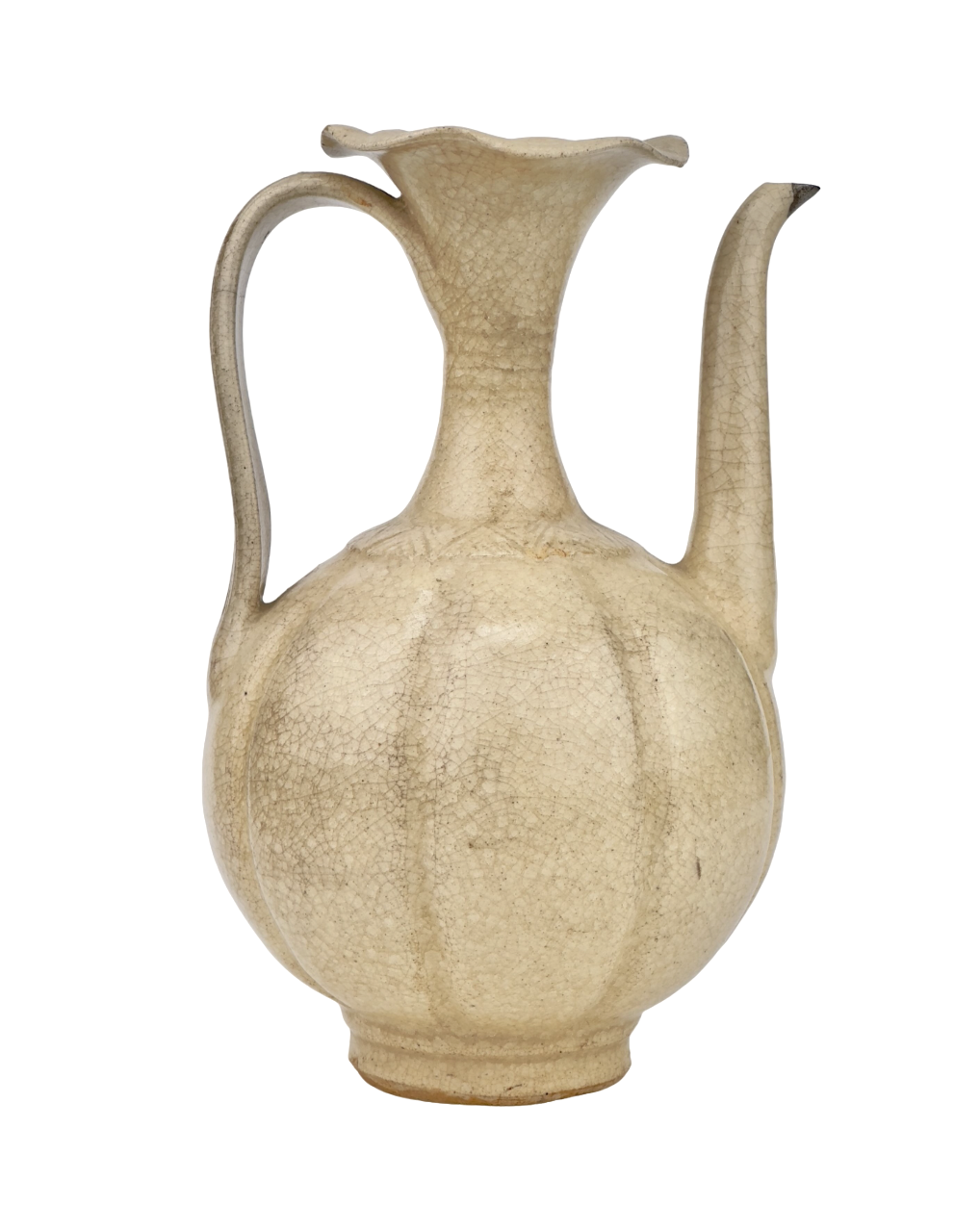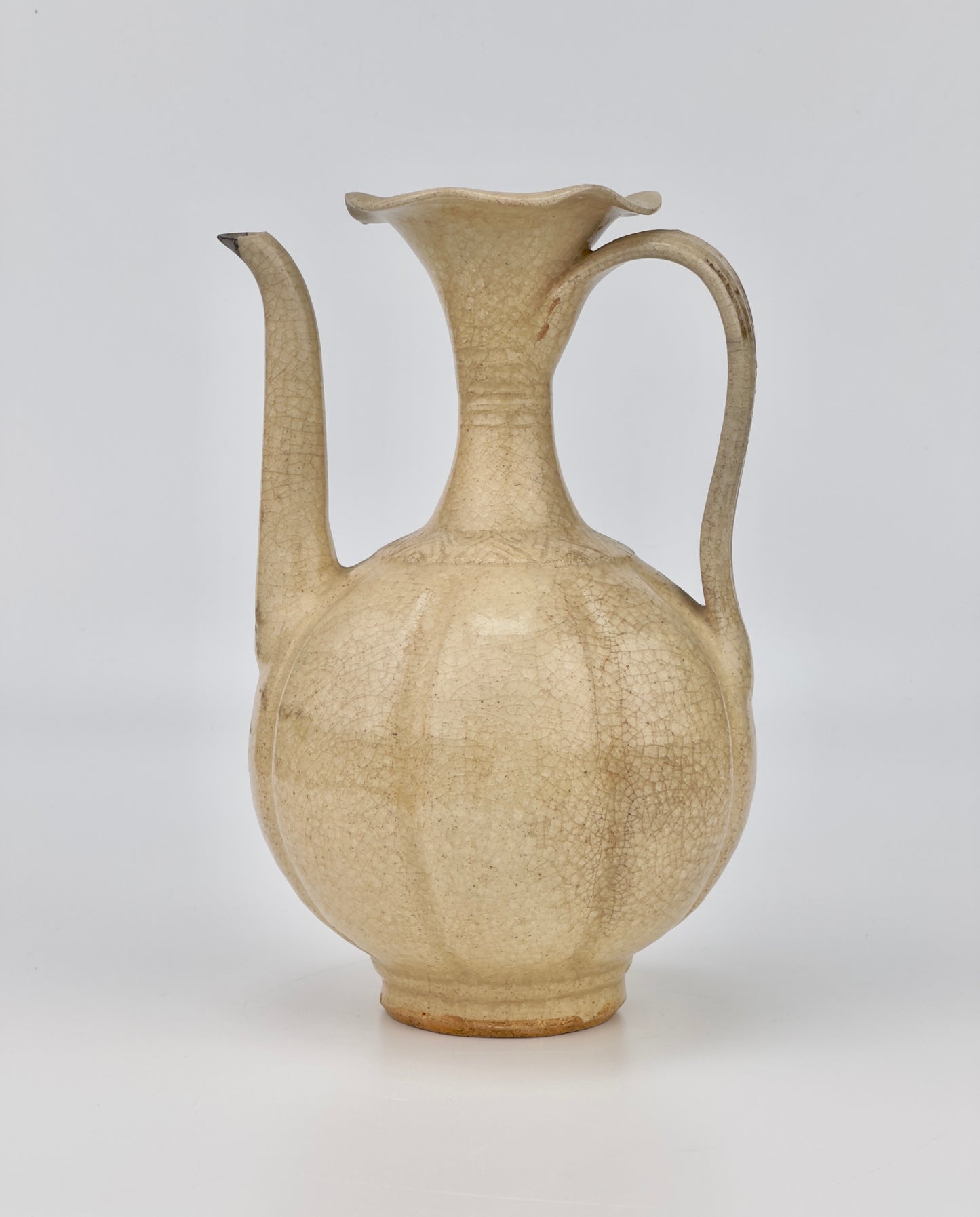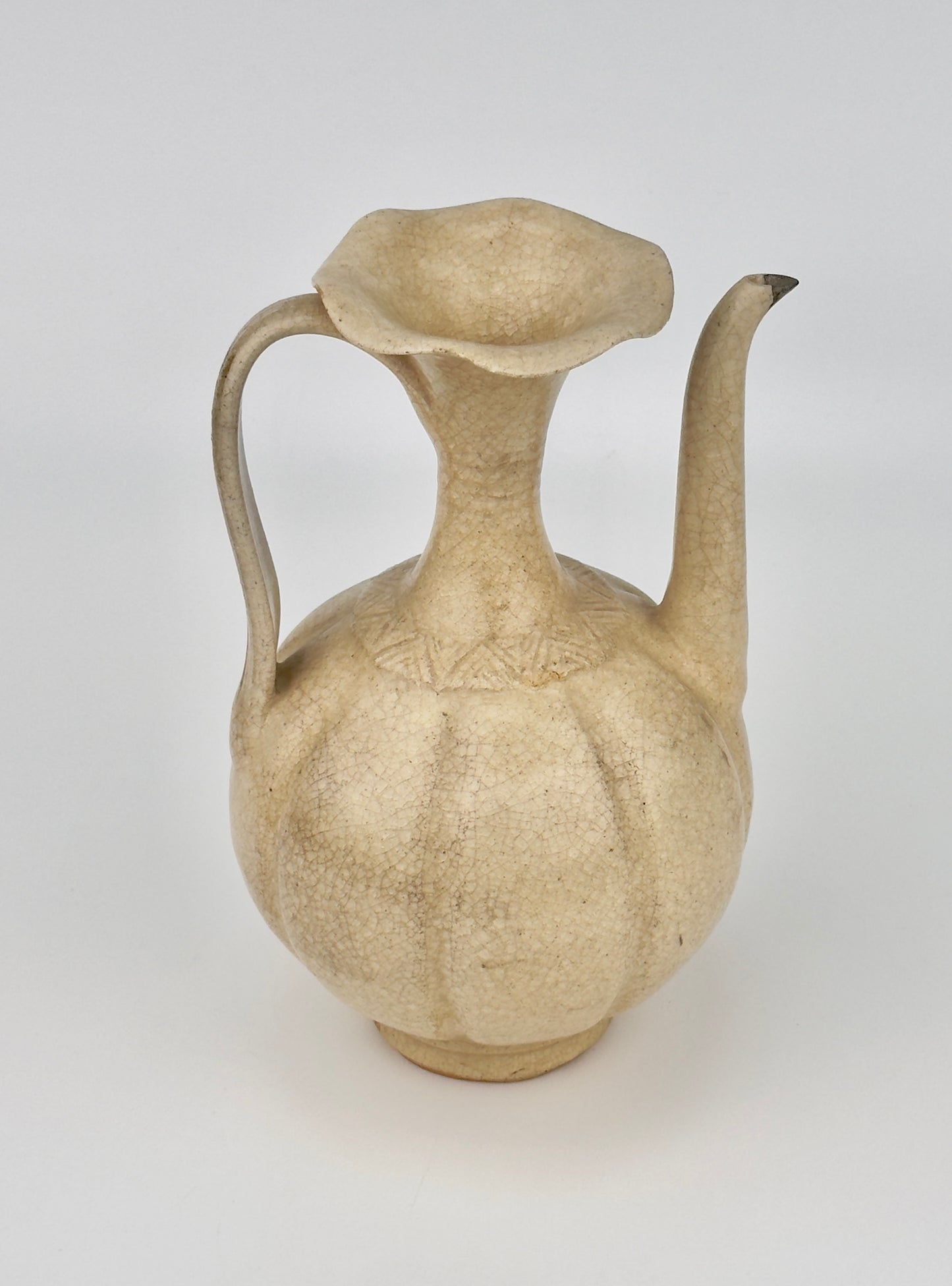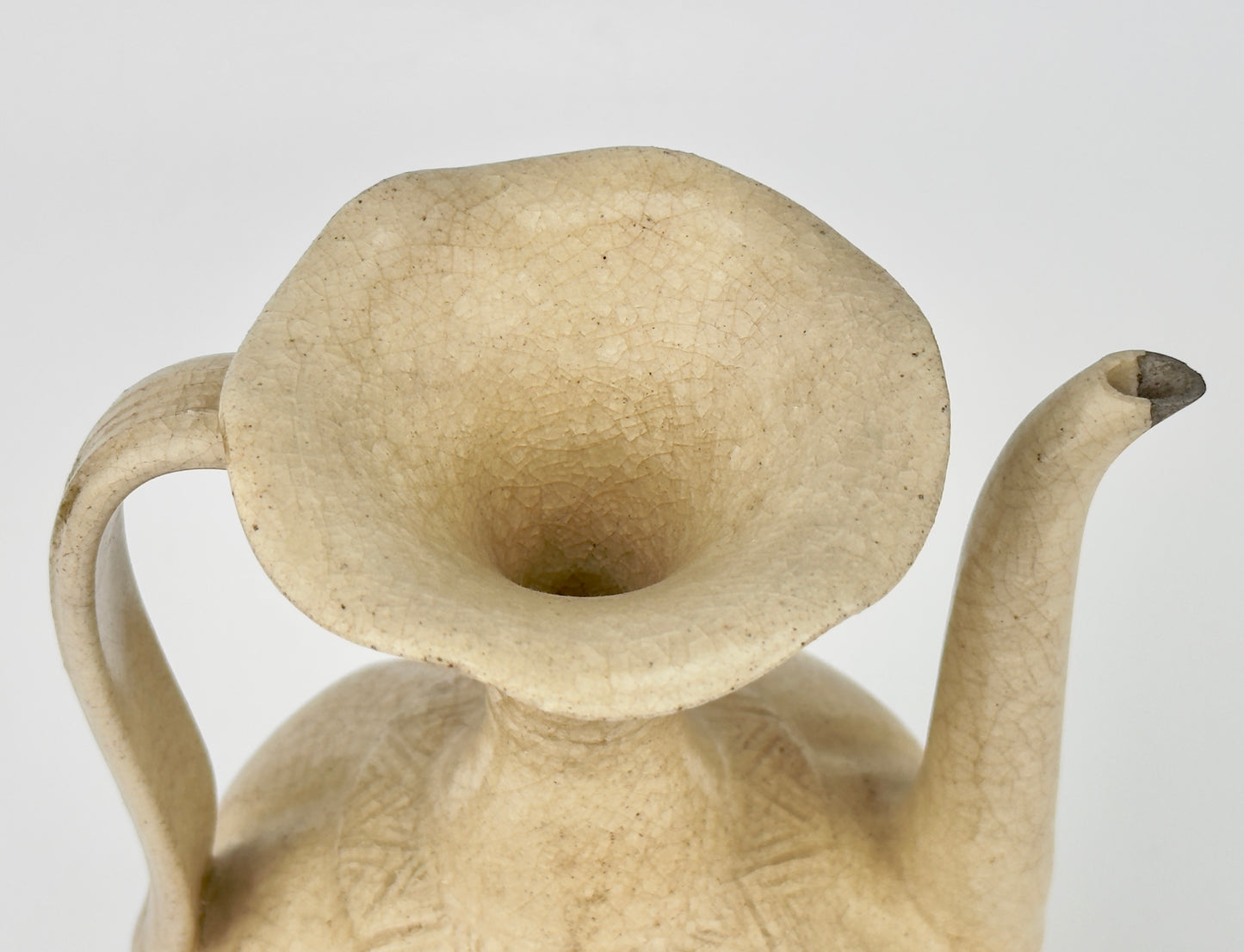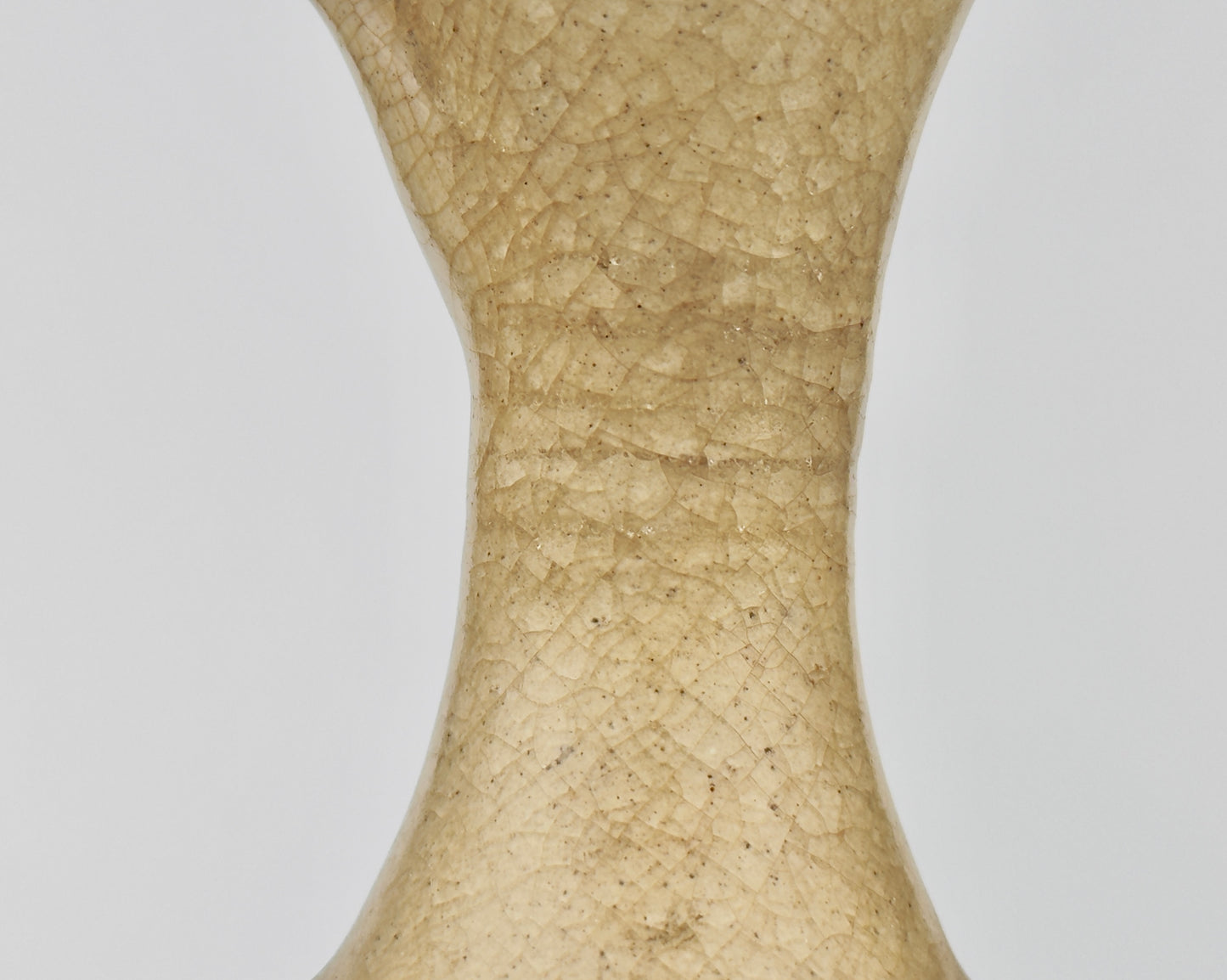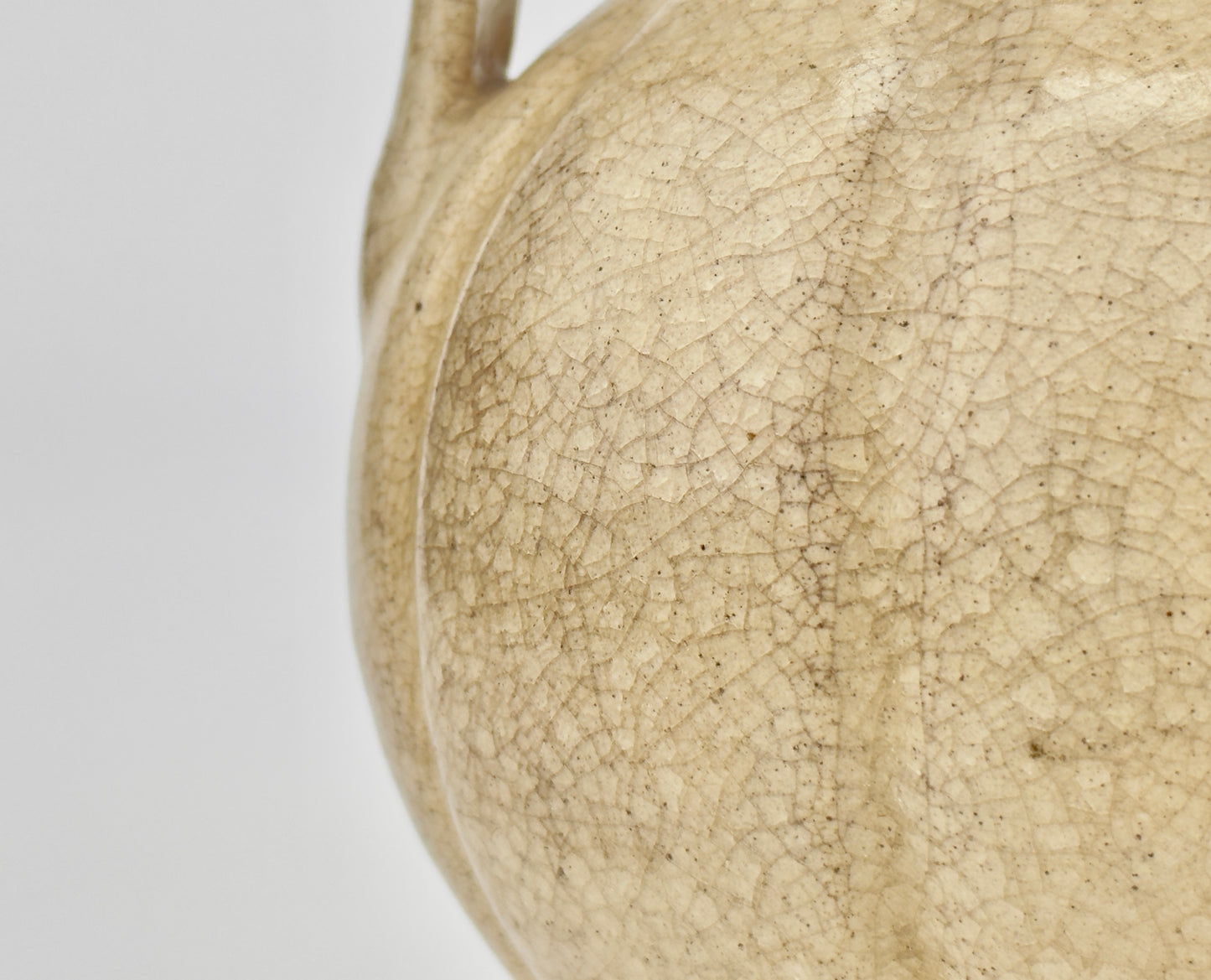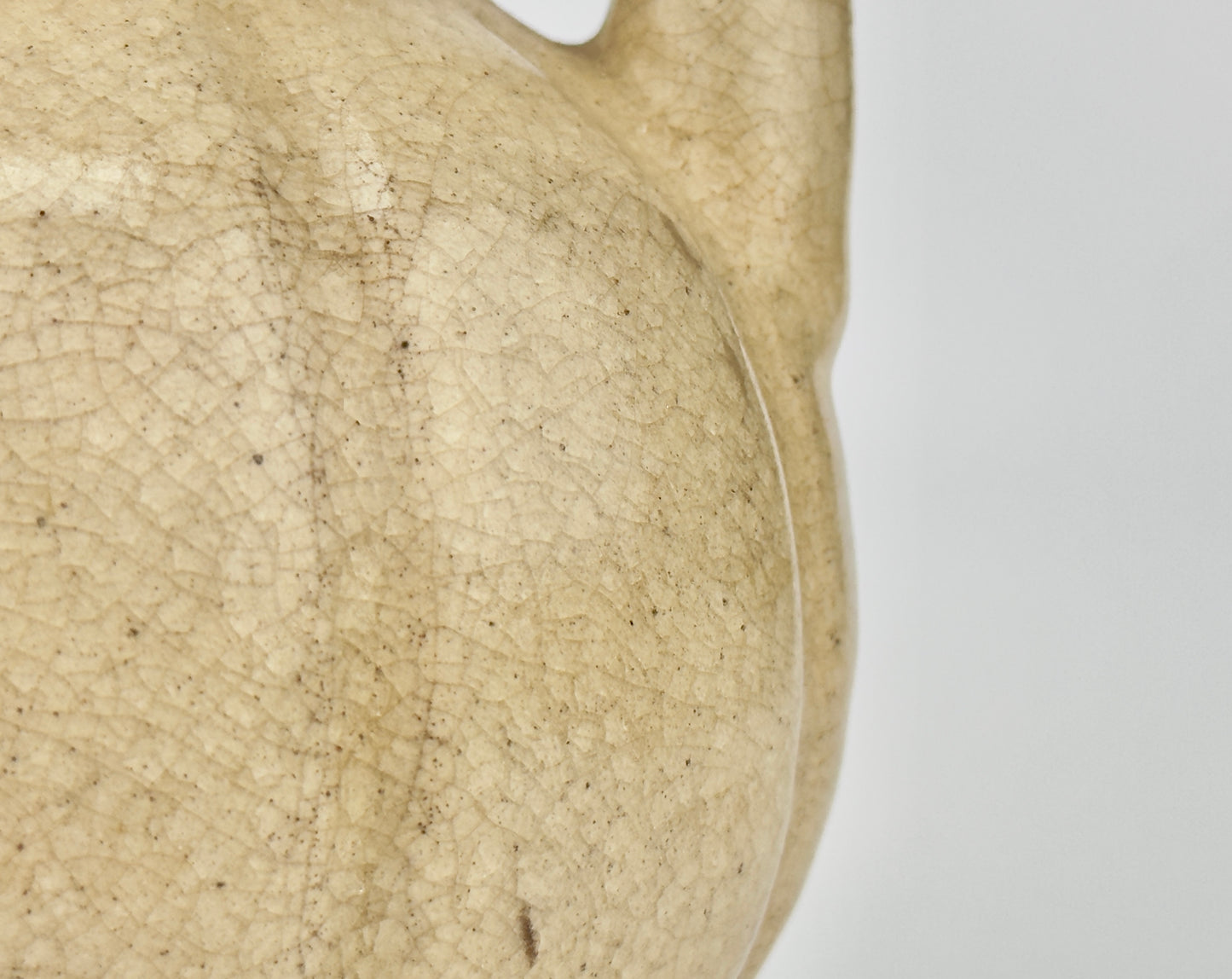AUA Oriental Art
Rare annamese cream glazed ewer, Vietnam, 11-15th century
Rare annamese cream glazed ewer, Vietnam, 11-15th century
Couldn't load pickup availability
Famous annamese cream glazed ceramic ewer covered with a cream glaze. Traces of excavation are clearly visible in the glaze.
Dates : Presumably Ly Dynasty (11-13th century)
Region : Vietnam
Type : Ewer
Condition : Good(Repair on spout)
Size : 20cm(Height) x 8cm(Mouth Diameter)
Found/Acquired : Southeast Asia , South China Sea, Shipwreck
* Vietnamese Pottery from the 10th to 15th Century
From the 10th to the 15th century, Vietnamese pottery underwent significant developments, reflecting various technological advancements and cultural influences. This period marked an important era in which Vietnamese pottery developed its unique styles and techniques, impacting not only Southeast Asia but also a broader region.
10th to 12th Century: Early Developments
- 10th Century: After gaining independence, Vietnam began to develop its own pottery styles, moving away from Chinese influences. This period primarily featured simple forms and functional designs.
- Ly Dynasty: From the 11th century, during the Ly Dynasty, Vietnamese pottery became more sophisticated and varied. Although Chinese pottery techniques and styles continued to influence it, Vietnam started to integrate more of its unique elements and techniques.
13th Century: Leap and Innovation
- During this time, Vietnamese pottery saw significant advancements, particularly towards the end of the Ly Dynasty, showcasing unique beauty and technical innovation.
- Medieval Vietnamese Pottery: The major production area was the Red River Delta region, particularly in the north, famous for its scenic depictions on ceramics. Pottery produced here began to be exported to foreign markets, including China and Japan.
14th and 15th Century: Maturity and Expansion
- Ho Dynasty and Later Le Dynasty: During these periods, Vietnamese pottery developed increasingly complex designs featuring a variety of colors and patterns. High-end products such as blue and white porcelain were produced.
- Trade and Cultural Exchange: By this time, Vietnamese pottery was being exported beyond Southeast and East Asia, reaching even Europe. This indicated international recognition of the quality and artistry of Vietnamese ceramics.
Share
